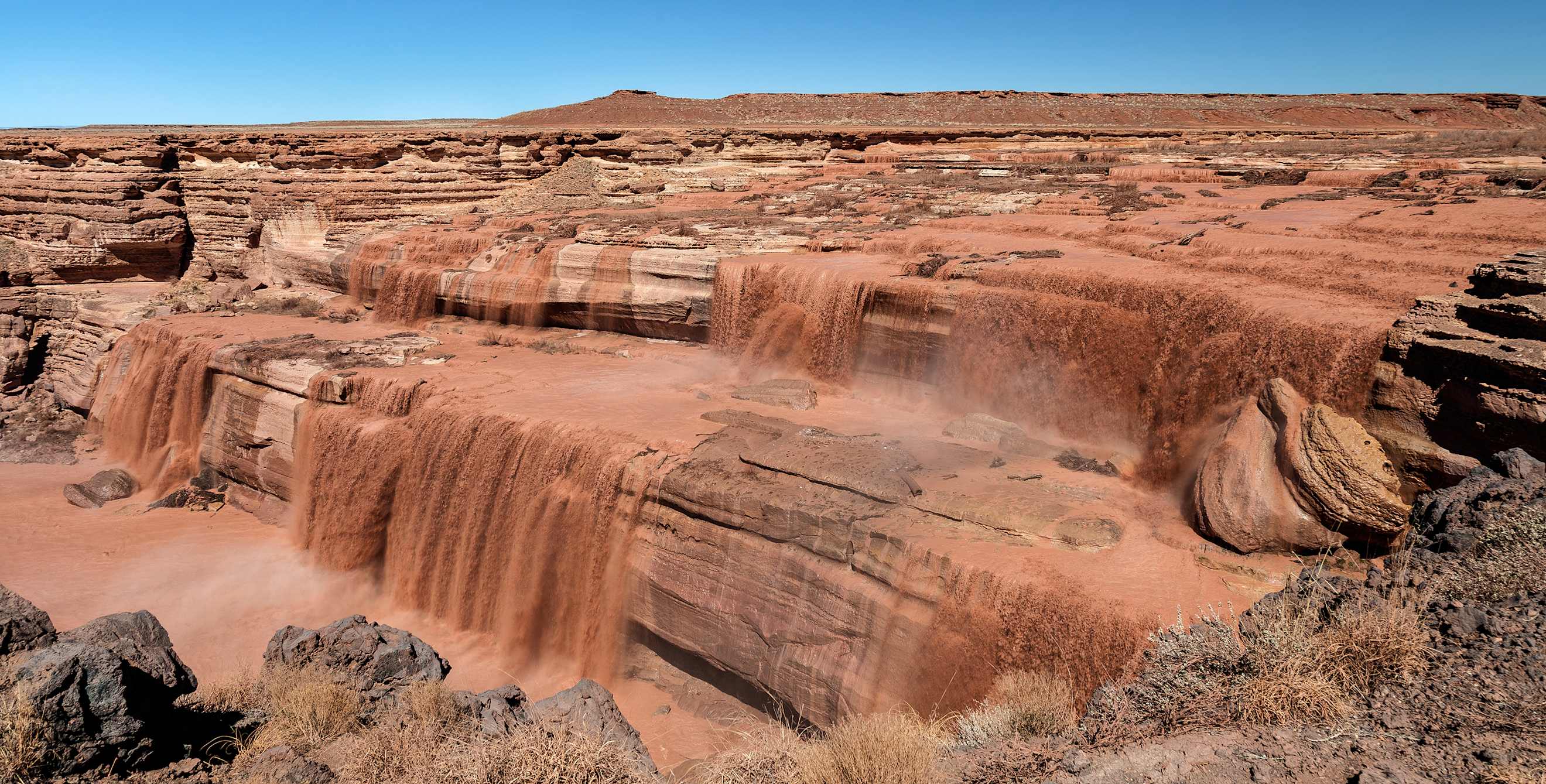
Indulge in the Painted Desert's Rare Chocolate Falls
Glimpse the Chocolate Falls, a natural waterfall system in the Navajo Nation's Painted Desert.

Originally, there wasn't really anything too grand about Grand Falls; it was just a deep canyon cut by a river. Then, about 20,000 years ago, lava from a nearby volcanic eruption flowed across the canyon, damming the river and creating a lake, which filled with sediment. Eventually, the sediment diverted the water along its current route back into the original canyon.
Now, when the current is strong enough, the waters of the Little Colorado River churn up sediment from that extinct lake, gaining their rich brown color. They then roar over a stair-stepped edge towering 14 feet higher than the American side of the Niagara Falls. Dr. G. Kent Colbath, a geologist who leads expeditions through the Museum of Northern Arizona to Grand Falls, says he's traveled the world and never seen anything like it.
Compared to the Grand Canyon, Monument Valley, and other attractions in the northern part of the state, Grand Falls receives few visitors. This likely is due to the fact that getting there requires four-wheel drive and involves driving on unmarked roads through the Navajo Nation. Once there, you'll find little infrastructure besides a few ramadas and pit toilets.
Navigating to the falls is only part of the challenge; timing is the other. Depending on when you go, the water may run clear or hardly at all since flow is largely controlled by dams upstream. Statistically, February is the best time to head to the falls, located approximately an hour northeast of Flagstaff, while May and June are the worst, according to Colbath. You also may see a roaring torrent in January, March, and monsoon season (July through September).
So, how do you know when to make the trip? Colbath recommends monitoring the United States Geological Survey website for current streamflow conditions. The reading for the Little Colorado River near Winslow and the Little Colorado River near Cameron must be at least 15 cubic feet per second to see clear water spilling over in multiple rivulets and at least 400 to 500 cubic feet per second to see "chocolate" falls.
"It's really a guessing game with the falls," Colbath says. "The trick is to pull it up on the computer the night before and say, ‘Whoa, let's go tomorrow!'"
If You Go
Prepare: There are no facilities or service stations at Grand Falls. Fill your tank before leaving I-40, and bring your own water. Dress appropriately (jackets during winter months and sneakers or hiking boots year-round, especially if you plan to make this easy to moderate hike to the base of the falls). For general information, contact Navajo Nation Parks & Recreation.
Getting There: From I-40, take exit 211, and head north 2.3 miles to Leupp Road. Turn right. Continue 20.3 miles to Indian Road 6910, an unmarked dirt road between mileposts 5 and 6. Turn left and drive 9.4 miles. Take the turnoff on the left to the falls overlook.
Tours: The Museum of Northern Arizona offers tours of Grand Falls through its Ventures Trips program. Cost is $85 for museum members and $105 for nonmembers.